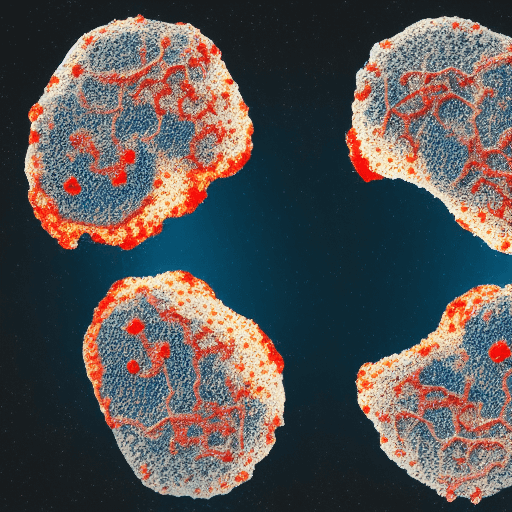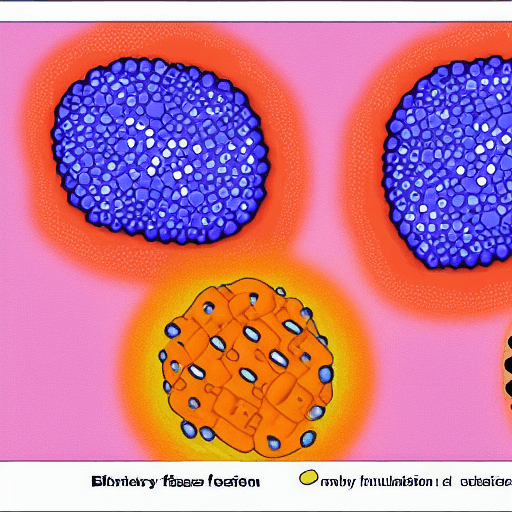Binary Fission Vs Multiple Fission
When it comes to cell division, binary fission vs multiple fission are two of the most common methods.
But what is the difference between binary fission and multiple fission?
Which one is better?
Let’s take a closer look at both methods to identify the pros and cons of binary vs multiple fission.

- Binary fission is the splitting of a cell into two daughter cells. This process can occur when the cell is ready to divide, or it can be a response to DNA damage.
- Multiple fission is the splitting of a cell into more than two daughter cells. This process generally occurs as a result of damage to the cell membrane.
Difference between binary fission and multiple fission
There are two main types of fission: binary fission and multiple fission.
Binary fission is the process where a cell splits into two equal halves whereas multiple fission is the process where a cell divides into more than two equal parts.
The main difference between binary fission and multiple fission is that binary fission results in two genetically identical cells while multiple fission does not.
Multiple fission generally occurs in response to stressful conditions, such as overcrowding, lack of food, or exposure to high levels of radiation.
- When a cell undergoes multiple fission, it first grows to twice its normal size.
- The nucleus then divides into several smaller nuclei, each of which migrates to one end of the enlarged cell.
- The cell then pinches in the middle, forming two or more new cells.
- Binary fission, on the other hand, is a reproductive strategy that produces two genetically identical daughter cells from a single parent cell.
This type of cell division is common among bacteria and some single-celled eukaryotes, such as amoebas.
During binary fission, the parent cell grows until it is twice its normal size.
The nucleus then divides into two daughter nuclei, each of which migrates to opposite ends of the cell.
The cell then splits in the middle, forming two new cells.
What are the similarities between binary fission vs multiple fission?

Both binary fission and multiple fission are processes used by single-celled organisms to reproduce.
In binary fission, the cell splits in two, forming two identical cells.
In multiple fission, the cell divides into many small cells, each of which grows into a new organism. Both processes result in an increase in the number of cells, allowing the population to grow.
However, there are some key differences between the two processes.
Binary fission is a relatively simple process that can be completed quickly, while multiple fission is more complex and takes longer to complete.
Additionally, binary fission produces two identical cells, while multiple fission results in a variety of cells with different genetic makeup.
As a result, multiple fission is more efficient at generating genetically diverse populations, which can be advantageous for survival in changing environments.
What are the benefits of binary fission vs multiple fission?

There are several benefits of binary fission over multiple fission.
- First, binary fission results in two identical cells, while multiple fission does not. This means that if one of the cells generated by binary fission is damaged, the other cell can be used as a replacement.
- Second, binary fission is a more efficient way to produce large numbers of cells than multiple fission. This is because multiple fission takes longer and uses more energy than binary fission.
- Finally, binary fission allows for a greater degree of control over cell division than multiple fission.
This is important for organisms that need to maintain a specific number of cells, such as plants and animals.
Examples of binary fission and multiple fission

Binary fission is when a cell splits into two identical daughter cells.
This type of fission is common in prokaryotes, such as bacteria.
Multiple fission is when a cell divides into many smaller cells. This type of fission is common in unicellular eukaryotes, such as amoebas.
Both binary fission and multiple fission are examples of asexual reproduction, meaning that they do not require the involvement of another organism.
Asexual reproduction is advantageous because it is a very efficient way to produce large numbers of offspring.
In many cases, it is also the only way that certain organisms can reproduce.
Overall, binary fission and multiple fission are two examples of asexual reproduction that are used by different types of organisms.
When should you use binary fission vs multiple fission?
Binary fission and multiple fission are both methods of cell division that can be used by single-celled organisms.
When an organism undergoes binary fission, the nucleus of the cell divides into two equal parts, and the cell then splits into two separate cells.
Multiple fission is similar, but instead of the nucleus dividing into two parts, it divides into many small nuclei.
These nuclei then divide the cell into many small daughter cells. Both binary fission and multiple fission allow single-celled organisms to reproduce quickly and efficiently.
However, there are some situations where one method may be more advantageous than the other.
For example, binary fission is often used by bacteria when environmental conditions are favorable. Under these conditions, bacteria can divide very rapidly, allowing them to quickly colonize a new environment.
On the other hand, when environmental conditions are harsh, multiple fission may be a better strategy.
This is because each daughter cell created by multiple fission is smaller than a cell that has undergone binary fission.
As a result, these cells require fewer resources and are less likely to be damaged by harsh conditions.
In conclusion, binary fission and multiple fission are both useful methods of cell division, but they each have their own benefits and drawbacks.
Article Sources
Jacks of Science sources the most authoritative, trustworthy, and highly recognized institutions for our article research. Learn more about our Editorial Teams process and diligence in verifying the accuracy of every article we publish.